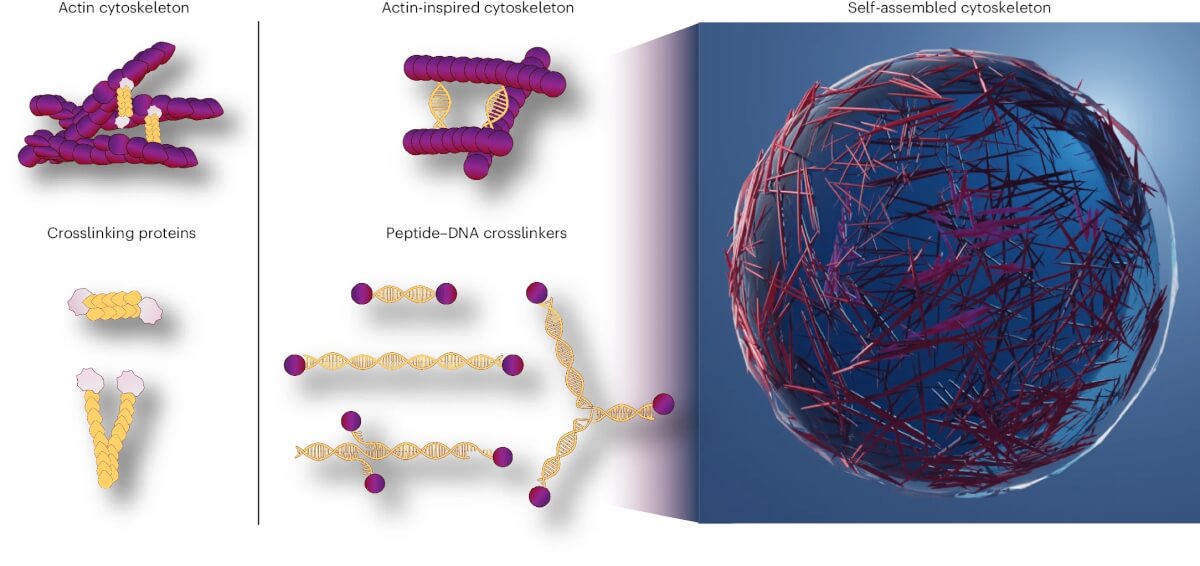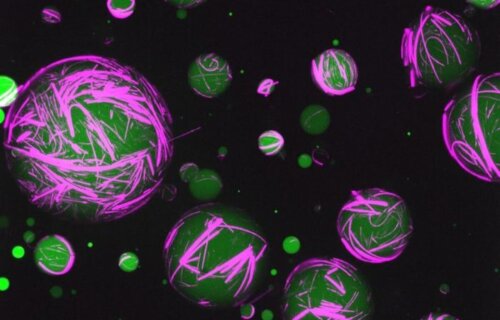CHAPEL HILL, N.C. — In a milestone that blurs the line between the natural and synthetic worlds, scientists at UNC-Chapel Hill have constructed artificial cells that mimic the behavior of living cells. This groundbreaking achievement, a first in the annals of science, could unlock new frontiers in regenerative medicine, drug delivery, and medical diagnostics.
“With this discovery, we can think of engineering fabrics or tissues that can be sensitive to changes in their environment and behave in dynamic ways,” says Freeman, whose lab is in the Applied Physical Sciences Department of the UNC College of Arts and Sciences, in a media release.
Cells and tissues are composed of proteins that form together to perform various tasks and make structures. At the core of every cell lies the cytoskeleton — a dynamic, protein-rich scaffolding that gives the cell its structure and flexibility. Without this vital framework, cells would be mere amorphous blobs, unable to divide, migrate, or perform any of their essential tasks. By mastering the construction of artificial cytoskeletons, Freeman’s team has cracked the fundamental code of cellular architecture.
Their breakthrough, published in the journal Nature Chemistry, came through an ingenious mash-up of DNA nanotechnology and protein engineering. Using a “programmable” system that directs amino acid building blocks into specific sequences, the researchers could coax snippets of genetic material to self-assemble into structured, protein-like lattices capable of morphing their shapes — behaving uncannily like natural cytoskeletons.
“DNA does not normally appear in a cytoskeleton,” Freeman explains. “We reprogrammed sequences of DNA so that it acts as an architectural material, binding the peptides together. Once this programmed material was placed in a droplet of water, the structures took shape.”

The capacity to program DNA in this way means scientists can create cells capable of serving specific functions and even fine-tune cell responses to external stressors. While living cells are more complex than the synthetic ones created by Freeman’s Lab, they are also much more unpredictable and susceptible to hostile environments, such as severe temperatures.
“The synthetic cells were stable even at 122 degrees Fahrenheit, opening up the possibility of manufacturing cells with extraordinary capabilities in environments normally unsuitable to human life,” Freeman comments.
As opposed to being “built to last,” Freeman describes their materials as “made to task,” — meaning they’re capable of performing a specific function and then modifying themselves to serve a new function. Their use and application can be customized by adding different peptide or DNA designs to program cells in materials such as fabrics or tissues. Those new materials can then integrate with other synthetic cell technologies. Some potential applications may revolutionize fields like biotechnology and medicine.
“This research helps us understand what makes life,” Freeman concludes. “This synthetic cell technology will not just enable us to reproduce what nature does, but also make materials that surpass biology.”
